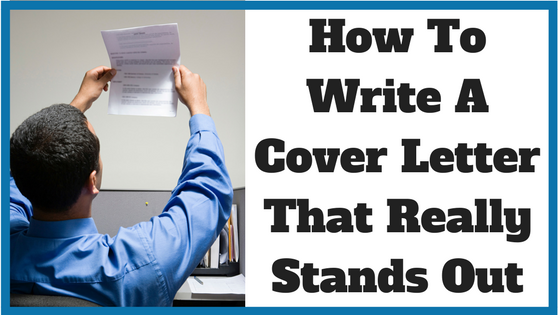How To Write A Cover Letter That Really Stands Out
A tip-top resume can prove you’ve got the grades. But what makes a company open that PDF doc in the first place?
The very first thing a recruiter sees of an applicant is his/her cover letter. And, in a business where only six seconds are spent on any one resume, first impressions count.
Spot a job ad on Monster that you’d be perfect for? So have hundreds of other people. Here’s how you can make your cover email stand out from the crowd.
The objectives
What are the main objectives of a cover letter? There are three, really:
- Introduce yourself
- Summarize experience
- Prove competence
By introduce yourself, we don’t mean tell them your name and job. Really introducing yourself means giving the employer a sense of your personality, your drive and understanding of the role. It means communicating why you want their job and what you know about their company. While you’re never going to befriend a recruiter through twenty lines of Calibri, you can certainly give them an (extremely vague) outline of what you’re about.
Summarizing experience means just that—summarize. Cover letters are not a second CV. Don’t use them to outline all your work history to date or list your qualifications. This is a supplement to your resume; a cover to make employers want to read it. Take the highlights and deliver them, in as few words as possible. “I know how to deliver accurate copy to spec and to time because I already write two articles a day in my current role, which I have held for seven months.†On to next point.
Proving your competence is simple: write well. If it takes getting your entire family to read over your email one-by-one to iron out those errors, do it anyway. No matter what you’re applying for, a poorly written cover letter is going to turn a recruiter right off.
Get smart
You’re not writing this cover letter in a vacuum. This is a company you’re applying to–a real business which exists in the real world and, hopefully, makes real money. So research it.
Learn what the company does, how it does it and what values it prides itself on. Examine the spec on the job ad minutely, until you know the requirements they cite off by heart. You don’t have to meet all of them. Research shows that women in particular shy from applying to jobs unless they feel they meet all demands. But so long as you’re 75% there, it’s worth having a go.
Finally, attempt to find out the name of your addressee. If the email is a standard application account, don’t worry too much. But if the name of the hiring manager is mentioned anywhere on the spec or site, make sure you address them by name. Those details make all the difference.
Forma(t)lities
Don’t know the name of your addressee? Use Mr or Ms, depending on gender. If the hiring manager’s identity and gender is a mystery, just go for Sir/Madam. Don’t use first names unless you are certain they’ll be cool with it. Some people take that stuff badly.
Write in short paragraphs of max a few lines each and don’t write more than four paragraphs. Nobody likes big blocks of text in an email; they simply won’t read it. The length of your email should be less than half an A4 page if you copy/paste it into Word.
Your four paragraphs should, in this order, cover the following: brief intro and where you saw the job ad; why you’re applying for the job at this company; your more relevant qualifications; a brief, wrap-up and sign off with contact details. Your tone should be professional but approachable.
Copycat
Do NOT copy/paste cover letters. Please, please, please just don’t. To repeat: write a new one every time.
Max your pizzazz
At last, the biggie: How to stand out from the crowd.
For a creative industries application, injecting a little fun into your cover letter isn’t the worst idea. It has to be well-judged, but a flourish or two could help your personality pop. For a branding job, for example, you might consider using a favorite font of your target company; it shows not only attention to detail, but that you’ve done your research. If you’re a graphic designer, you might like to pep up the look of your email with some small design or color. And so on.
For finance and more corporate roles, you’re more inhibited. You need to look serious, and cracking jokes in your cover letter doesn’t give the right impression. But that doesn’t mean you’ve got no options available to you. Using bullet points to outline relevant experience may be unusual, but it will help your best qualifications pop. You might even consider making up a portfolio of relevant work materials – if you have the examples and if it contains no delicate information belonging to previous employers. Portfolios aren’t just for creatives; why just say you can compile a report when you can actually prove it?
Looking for more ideas? The Guardian has some pretty fool-proof examples to draw inspiration from. Though a cover letter might make or break your job hunt, it’s still just an email. And an email never ruined anyone’s career… did it?
About the Author S
The author has asked to remain anonymous.


